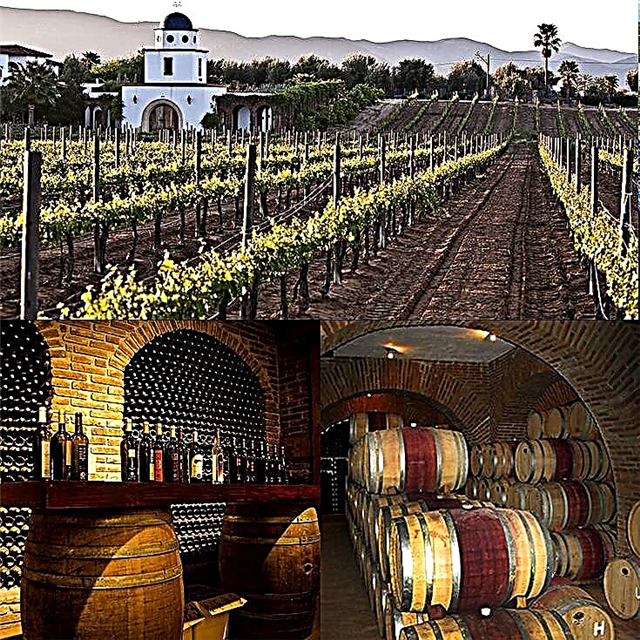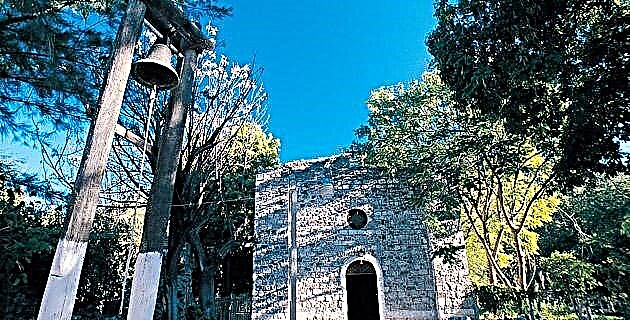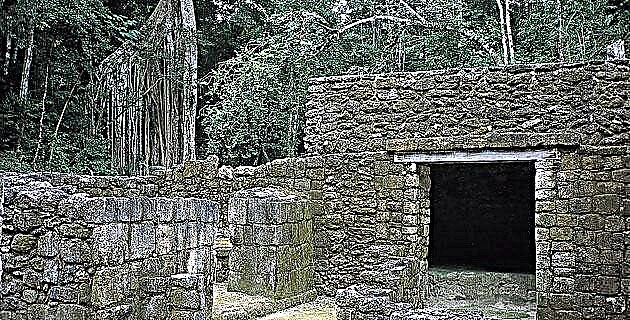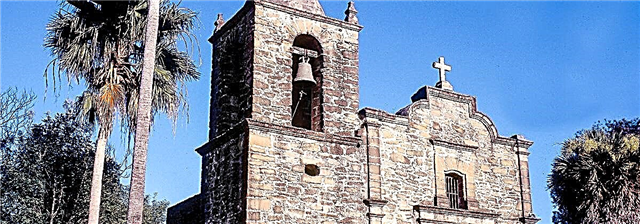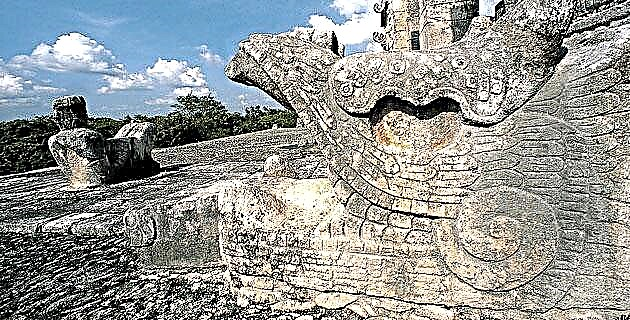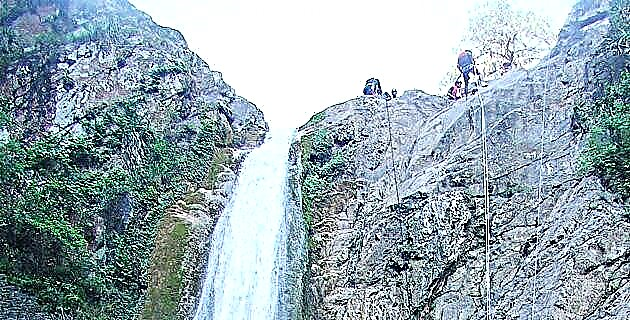
Alfredo Martínez, one of our expert collaborators -a fanatic of adventure sports-, embarked on the exploration and conquest of this natural wonder a few kilometers from Monterrey.
We embarked on the adventure in this formidable canyon located in the Sierra de Santiago, which is part of the Sierra Madre Oriental in the state of Nuevo León. The mighty torrent of water slid under our feet, threatening to drag us into the void, as we placed the ropes and began to rappel in the impressive Matacanes waterfall. Defying the void, we descended the great jump, feeling the powerful force of the water collide with our body. Suddenly, 25 m below, we plunged into a refreshing pool where we swam until we reached the other shore.
This is how we began our great adventure through the Matacanes Canyon, practicing a new adventure sport known as canyoning, canyoning or canyoning. This formidable canyon is located in Sierra de Santiago, which is part of the Sierra Madre Oriental, in the state of Nuevo León.
Before embarking on the adventure, you have to know a little more about this new sport. It was born just ten years ago in two countries simultaneously, in France –in the Alpine valleys and natural parks of Avignon–, and in Spain –in the Sierra de la Guara, in the Aragonese Pyrenees–, and since then it has become popular in Europe, United States and Mexico. The adventurers who laid the foundations for this sport were the cavers, who found in the canyons the perfect setting to enjoy sportingly the natural wonders, applying their progression techniques in broad daylight. Although the credit is not only of the cavers, because in canyoneering, climbing, swimming and hydrospeed methods are also applied to rappel down the high waterfalls, jump into the crystalline pools without fear of the void, slide down long slides where the water descends in all his fury and swimming through narrow passages and canals.
Guided by our good friend Sonia Ortiz, we began this expedition. The first thing was to prepare all the equipment, which consists of a helmet, harness, descender, carabiners, safety straps, ropes, life jacket, shorts, boots, dry backpack or waterproof boat to store food and dry clothes, and headlamp for the caves. We leave from the Cola de Caballo Hotel towards Potrero Redondo; After a two-hour journey in a four-wheel drive vehicle, we reached Las Adjuntas, where we began the walk to the Potrero Redondo ranch and from there to the entrance of the canyon.
The first obstacle to overcome was a 25 m rappel; once you enter the canyon there is no going back, you have to follow its course until the end; That is why it is necessary to proceed with great caution and with all the necessary equipment, since any accident can be complicated by the difficult access to the area.
At the end of the descent we dive into a fantastic jade green pool, then swim and follow the course of the water; This, with its powerful eroding force, has molded through time an entire magical scene, where the blue and green colors of the water intermingle with the gray, ocher, yellow and white of the enormous walls of the canyon.
We continue walking, swimming, making small jumps and climbing over the rocks for almost two hours, until we reach the first matacán, a geological name given to some interesting formations of porous rocks, of calcareous origin, in the shape of huge watering cans.
Upon reaching the first machicolation, the earth swallows the river, and this is where we rappel down a 15-meter waterfall that rises hidden among the rocks, and thus we enter the jaws of the earth. This cavern has an approximate extension of 60 m and has stone slides inside. At the entrance of the cave is where these impressive formations are best admired. Once more we dove into a pool; within this underground river we lit our lamps to light the way. Ahead we face another exciting obstacle: a 5m jump in the dark, where the sandy bottom helps cushion the fall; the shouts of the companions did not wait, and you do not know where you are going to fall. Back in the water we swam 30 m inside this narrow underground passage.
The next section of the canyon is quite small, where we advanced swimming, climbing and jumping through waterfalls whose height varied from 6 to 14 meters.
In some places the force of the current is considerable, and a wrong step can make you fall before the necessary distance to avoid the stones at the bottom of the river, so you have to be very careful and calculate well before jumping. Shortly before reaching the second machicolation there is a site where the two largest jumps of the route are located, although it is not necessary to do them. Both are at the foot of a deep pit with walls of 8 and 14 m approximately. The area surrounding the cliff facilitates the perfect appreciation of these jumps and the possibility of repeating them as many times as desired, which is why it has become a meeting point for some groups that cheer and cheer on those who jump into the pit.
Some are launched from a rock known as "La Plataforma", almost 8 m, and the most intrepid from the ravine of about 12 m that has recently been baptized as "La Quebradita.
Then we went through a section of slides –where our shorts were made strips– and through very narrow passages, one of them called the “Stone Eat Men”. Finally we arrive at the entrance of the second machicolation, where to enter a tunnel we jump over a 6 m high waterfall. In this jump we find two dangers: the first is a stone where you definitely have to avoid falling and the second is the whirlpool of the waterfall.
Swimming we went into a fantastic open vault; It is a beautiful place where the machicolations bathed us with their seepage and water runoff. In a magical play of lights, the turquoise blue of the water contrasted with the green of the ferns that hung from the black walls, while the rays of light that filtered through the natural holes illuminated the refreshing jets of water that were born from the machicolations. Once again darkness took over the atmosphere and we turned on our lamps to illuminate the last 60 m stretch of the route. The exit of the cavern became narrower and covered with vegetation; nobody imagines the world that this small entrance encloses. The river continues its course to the place known as Las Adjuntas, where its waters meet with other rivers and streams that descend from the Sierra Madre Oriental, to later become the Ramos River.
The aquatic journey can last between five and eight hours, depending on the number of people who do it, the physical capacity, the performance and the pace and rhythm of the group.
EXCURSIONISM CLUB CIMA DE MONTERREY
This club organizes excursions or walks that take place every Sunday. Every week is a new place. Various routes and ascents are made through different routes, based on a very complete program that covers the most beautiful peaks that surround the city of Monterrey.
Matacanoes Nuevo LeonPhotographer specialized in adventure sports. He has worked for MD for over 10 years!


